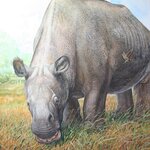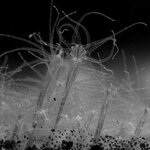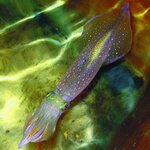Evolution

Charles Darwin, for all his brilliance, was perhaps paralyzed by insecurity. There are not many other explanations for why he delayed publishing his seminal work, "On the Origin of Species by Means of Natural Selection, or the Preservation of Favoured Races in the Struggle for Life", until 1859.
The mutual affinities of organic beings and their embryological relations were clearly on the minds of everyone in the science world during the 19th century and an 1858 paper by Darwin and Alfred Russel Wallace to the Linnean Society secured their place in history books about natural selection but 27…

Evolution has endowed females of certain species of amphibians, reptiles and fish with the ability to clone themselves and perpetuate offspring without males.
It has even happened more recently but these virgin births don't mean males are unneeded. Fertilization is still ensuring the survival of the maximum number of healthy offspring.
A species can increase its numbers faster in harsh environments when its females do not have to find worthy males and scientists have speculated that this ability arose independently in certain species, either due to conflict between the sexes or to…

Genetic modification of maize over the last century has led to desirable shoot characteristics and increased yield - and that likely contributed to the evolution of root systems that are more efficient in acquiring nutrients, such as nitrogen, from the soil, according to a new study.
About half of the yield gains in commercial corn in the last 100 years has come from improved plant genetics, explained Larry York, a postdoctoral research fellow at the University of Nottingham. The other half came largely from agronomic practices, such as fertilizer use and higher planting densities.…

For being a fellow of above average height (6'2" now - age will do that) traveling to Holland can be a strange experience. It seems like everyone is around my height. The men are tall, the women are tall.
Netherlands has the tallest people in the world. Yet they used to be the shortest. While everyone got taller during that time, Dutch average height went up 8 inches in two centuries.
Everyone has an explanation for this dramatic change in a relatively short amount of time - better food, for example. The rationale for that is research among Japanese people which found that…

Life has adapted to all sorts of extreme environments on Earth, among them, animals like the deer mouse, shimmying and shivering about, and having to squeeze enough energy from the cold, thin air to fuel their bodies and survive.
In a new paper, Scott, Cheviron et al., have examined the underlying muscle physiology from a group of highland and lowland deer mice. Peromyscus maniculatus - deer mice - were chosen because they exhibit the most extreme altitude range of any North American mammal, occurring below sea levels in Death Valley to more than 4,300 meters high in the mountains. …

An evolutionary puzzle has baffled palaeontologists for more than 180 years - the origins of Toxodon platensis and Macrauchenia patachonica, South American ungulates (hooved animals) described by Charles Darwin as the ‘strangest animals ever discovered’.
Previous attempts by scientists to pinpoint the origin of the animals using morphology-based and DNA analysis of fossils had failed but a new study presents evidence that the animals were related to mammals like horses, rather than elephants and other African species as some taxonomists have maintained.
The breakthrough happened when the…

Science 2.0, a new methodology for collaboration, communication, publication and participation, has tackled the evolution of an important protein and discovered its connection in human history, as well as clues about its role in complex neurological diseases.
It was obviously a large amount of data. Sharlee Climer, PhD, research assistant professor in computer science, and Weixiong Zhang, PhD, professor of computer science and of genetics at the School of Medicine discovered a region encompassing the gephyrin gene on chromosome 14 that underwent rapid evolution after splitting in two…

Most animals have a dorso-ventral (back-to-belly) body axis which determines the position of the central nervous system - dorsal in humans, ventral in insects.
Though there are obviously morphological differences, the same signaling molecules of bone morphogenetic protein (BMP) molecules establishes the dorso-ventral axis including the central nervous system in both insects and vertebrates, which led to the conclusion that this molecular mechanism was already present in the common ancestor.
Tracing the origin of the dorso-ventral axis has not been easy but sea anemones have…

Humans, worms and flies are all completely different organisms and yet we have a more or less common set of genes.
Given that similar DNA blueprint, how do species develop such vast differences in physical shape, size, and complexity?
One so-called "central dogma" of molecular biology says that genetic information passes faithfully from genomic DNA to messenger RNA to the synthesis of proteins but a new study finds that such information can be significantly altered along the way by a variety of means, including by precision "editing" at the RNA stage to fine-tune the type of proteins…

How does a mother transition genetic control to offspring early in development?
It's part of a larger mystery regarding how embryos regulate cell division and differentiation into new types of cells.
A new article in Cell provides some insight into the mechanism for this genetic hand-off, which happens within hours of fertilization, when the newly fertilized egg is a zygote.
Researchers have known that in most animals, a newly fertilized egg cell divides rapidly, producing exact copies of itself using gene products supplied by the mother. After a short while, this rapid cell…